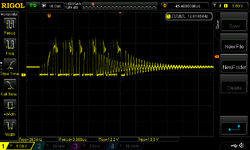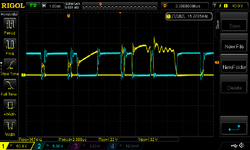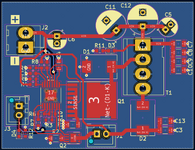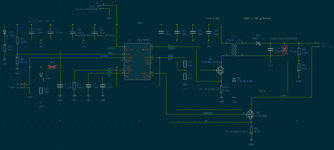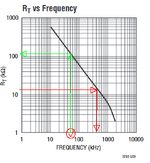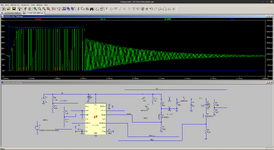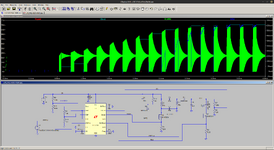ArticCynda
Advanced Member level 1

Hi everyone,
I'd like some input and/or second opinion from those among you who are experienced with switched mode DC/DC converters, please!
I'm working on a LED driver that runs strings of LEDs at 72 V with a forward current of 600 mA, designed to run from a 24 V DC supply. See circuit and sim results below. Blue curve shows output voltage (rectified secondary transformer winding) and green curve shows current through the LEDs. The circuit design follows datasheet guidelines, and works exactly as expected in LTSpice where it produces 72 V output at 600 mA forward current, and can be very nicely PWM'ed.
Unfortunately, the prototype doesn't work. When the RUN threshold voltage is applied to turn on the LTC3783 controller, oscilloscope on primary transformer winding shows there is no switching happening at all. Instead, the LTC3783 gets really hot in just a few seconds, and the circuit draws ca. 150 mA from the 24 V supply rail. The only difference between simulation and prototype is that I swapped the Si4470 Vishay MOSFET for Infineon IPT015N10NF2S MOSFET, due to unavailability of the Vishay ones.
Any suggestions on where to start debugging this? All ideas/tips are most appreciated.
Thanks,
AC

I'd like some input and/or second opinion from those among you who are experienced with switched mode DC/DC converters, please!
I'm working on a LED driver that runs strings of LEDs at 72 V with a forward current of 600 mA, designed to run from a 24 V DC supply. See circuit and sim results below. Blue curve shows output voltage (rectified secondary transformer winding) and green curve shows current through the LEDs. The circuit design follows datasheet guidelines, and works exactly as expected in LTSpice where it produces 72 V output at 600 mA forward current, and can be very nicely PWM'ed.
Unfortunately, the prototype doesn't work. When the RUN threshold voltage is applied to turn on the LTC3783 controller, oscilloscope on primary transformer winding shows there is no switching happening at all. Instead, the LTC3783 gets really hot in just a few seconds, and the circuit draws ca. 150 mA from the 24 V supply rail. The only difference between simulation and prototype is that I swapped the Si4470 Vishay MOSFET for Infineon IPT015N10NF2S MOSFET, due to unavailability of the Vishay ones.
Any suggestions on where to start debugging this? All ideas/tips are most appreciated.
Thanks,
AC



